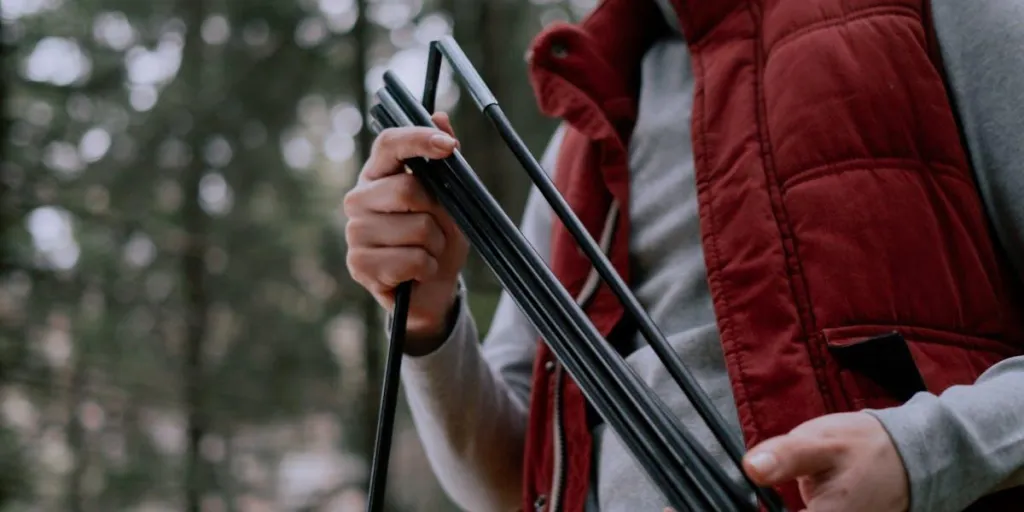No one can deny the importance of tent poles when setting up camping sites. Simply put, there is no tent without tent poles. Since these tools are so important, it’s only fitting that retailers consider various factors before selling them to aspiring campers. Plus, since the beginning of 2024, there have been over 22,000 potential customers searching for tent poles, according to the Google Ads Search report.
Tent poles must be able to endure a lot, especially when campers set up tents in adverse conditions. But don’t worry. This article will explore five fast-moving and durable tent pole materials that buyers are looking for, three key things to consider before buying them, and four strategies business buyers must consider to sell them profitably in 2024.
Table of Contents
5 types of camping tent pole materials
3 necessary aspects to look at when stocking camping tent poles
4 strategies business buyers can use to sell more tent poles
Bottom line
5 types of camping tent pole materials
Tent poles have up to four types available today, including steel, fiberglass, aluminum, and inflatable options. Here’s a look at each one:
1. Steel tent poles
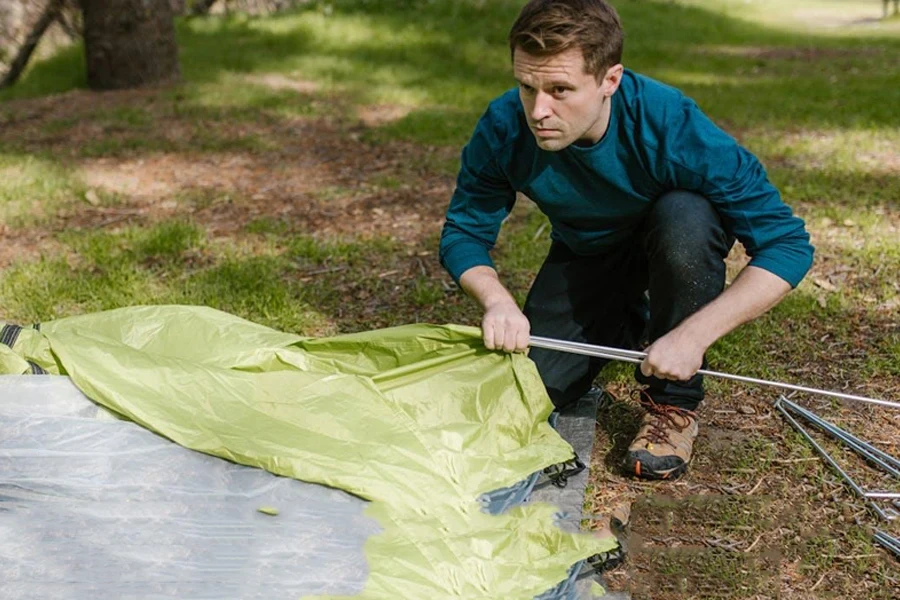
Steel poles offer the best strength compared to tent poles. Campers prefer them for use with large, heavy tunnel tents. However, this strength comes at a cost: heavyweight. Hence, lighter models flooding the market are slowly phasing out steel tent poles.
2. Fiberglass poles
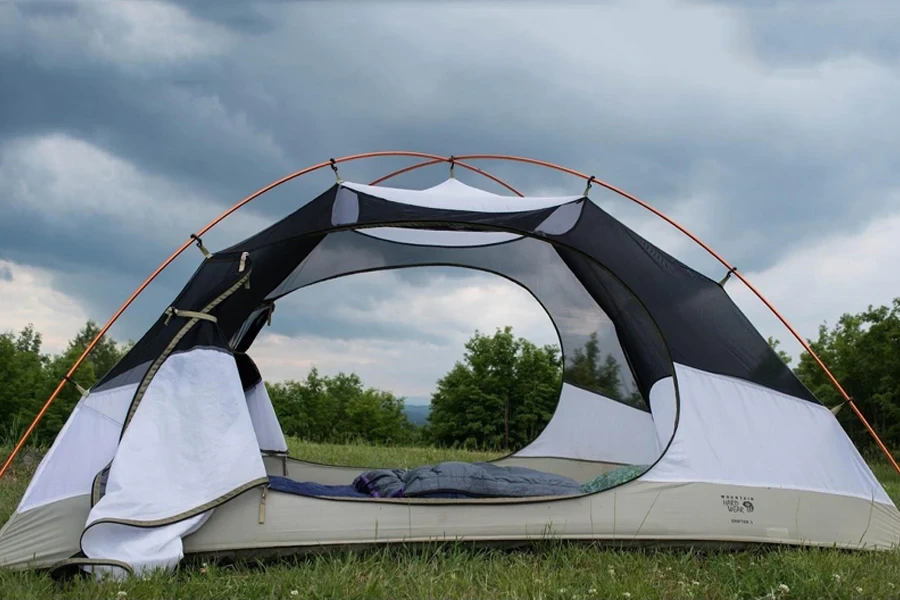
These poles are even more common than their steel counterparts. People love them because they are easy and cheap to repair. Nevertheless, they lack some durability, as consumers may break them if they use fiberglass poles without care.
3. Aluminum poles

When consumers want the perfect balance between strength and lightweightness, aluminum poles are the go-to. More importantly, these poles are long-lasting, even when consumers use them frequently. Plus, they can handle all weather conditions.
4. Carbon fiber tent poles

These poles are slightly lighter than aluminum options but just as strong. However, they are the most expensive option and only come with higher-end lightweight tents. Nevertheless, some consumers (based on feedback) say carbon fiber poles are not very reliable, especially when their weak points get stressed.
5. Air beams
These are not like traditional tent poles, but they are gaining increasing attention. Air beams, as their name implies, are tube consumers that inflate with air. They are incredibly easy and quick to set up. However, they can leak and often come with inflatable tents, meaning consumers will have a large and heavy package on their hands.
3 necessary aspects to look at when stocking camping tent poles
1. Tent type

Tents are like pick-your-own-adventure stories—each needs a specific set of poles to create its perfect structure. For instance, backpacking tents are all about portability, meaning they use lightweight, collapsible poles that segment into small sections. These poles are great for compact storage within the tent’s carry bag.
Conversely, car camping tents are more about space and durability. Hence, they often prefer thicker, stronger poles. These options may not fold into smaller pieces but can handle windier conditions easily.
Based on material, aluminum poles are a favorite for nylon, cotton, and polycotton tents. Campers prefer aluminum poles for these tents because of all the structures they can create with them. For example, consumers can enjoy more interior space with steeper walls only possible with aluminum poles.
2. Strength/reliability and weight considerations
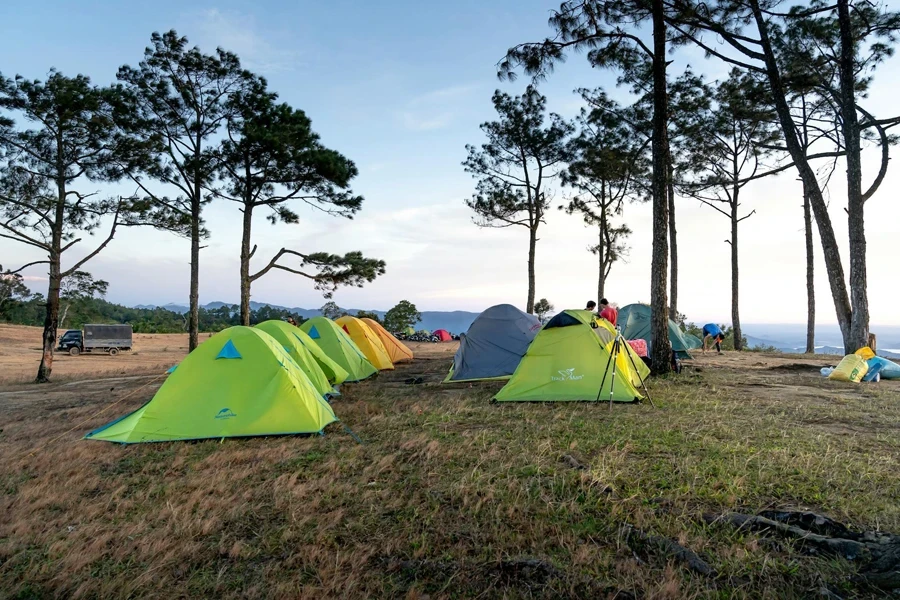
Strong winds and heavy rain can easily damage a weak tent. That’s why the strength of tent poles is so important. These poles are like the backbone of any camping shelter, helping it stay stable in all kinds of weather.
Backpackers who always look to save space and weight often choose the lightest options, such as fiberglass. These can be up to 30% lighter, which makes a big difference on long hikes. However, not everyone is willing to sacrifice stability just to save a few grams.
Depending on their camping style, some people might prioritize strength over weight (meaning they will go for aluminum tent poles), and others might do the opposite.
3. Installation ease
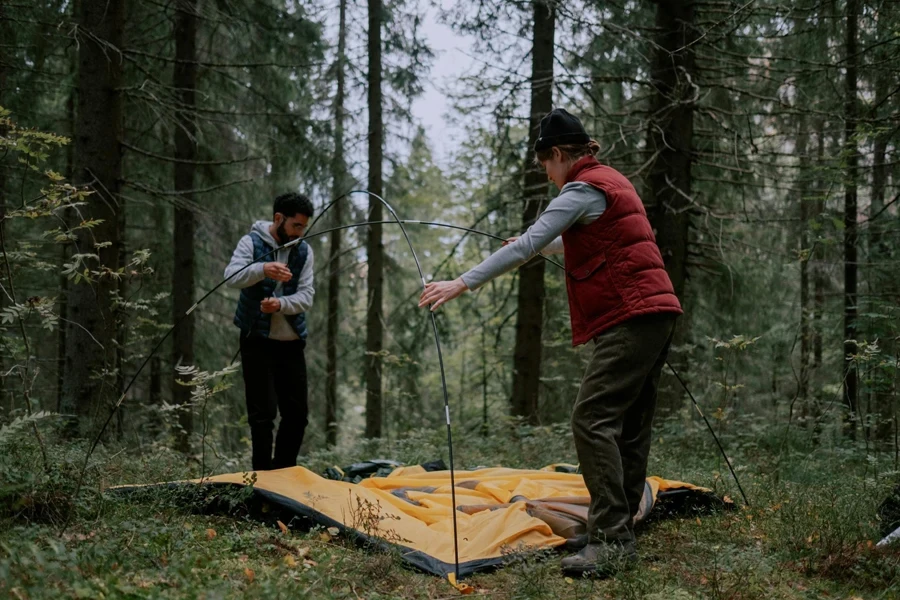
Imagine consumers finally arriving at their site, exhausted and ready to relax. The last thing they want is to struggle with their tent poles. If the setup is too difficult, they’re likely to leave bad reviews, which can hurt future sales.
To avoid this, businesses should prioritize tent poles with easy-to-use features that make setup a breeze. Here are two great features to look for:
I. Color coding
Tent poles with color-coded sections help consumers easily match the poles to the corresponding sleeves or connectors. This intuitive system reduces confusion and speeds up the setup process, leading to happier, less frustrated customers who are more likely to leave positive reviews.
II. Simple locking mechanisms
No one wants to wrestle with complicated pole locks. That’s why modern tent poles now come with user-friendly mechanisms that require minimal effort. The best options feature levers, toggles, or internal tension systems that secure each segment with a simple click or twist. This makes setup quick and easy, ensuring a better experience for the user.
4 strategies business buyers can use to sell more tent poles
1. Use more niche marketing channels

It’s time to move beyond generic marketing. Instead, businesses should focus on specific camping niches like ultralight backpacking, glamping, or adventure motorcycling. Creating informative blog posts, engaging social media content, or partnering with niche influencers can help retailers showcase how their tent poles excel in these unique scenarios.
2. Offer DIY repair kits and tutorials
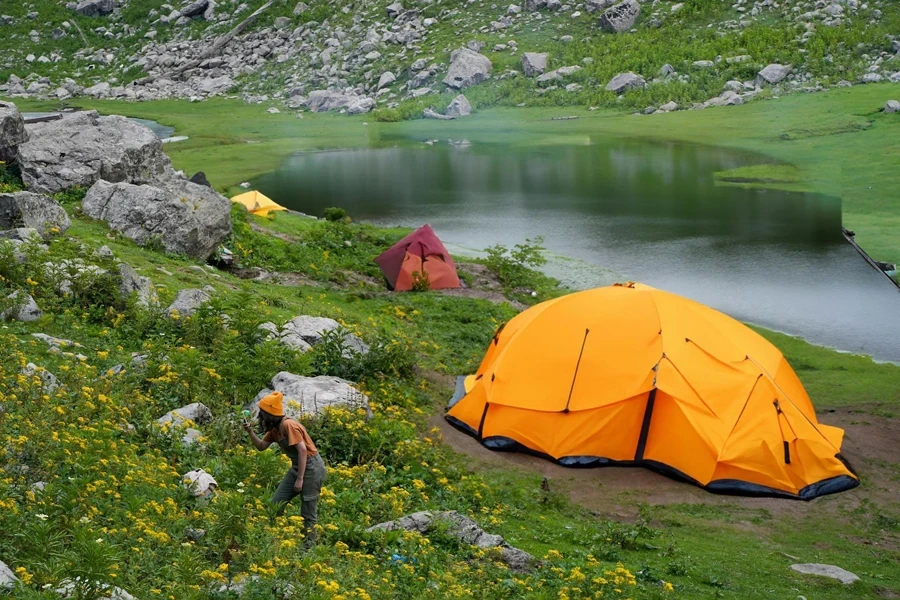
Accidents happen, and consumers shouldn’t be left stranded when they do. Retailers can support the DIY crowd by offering repair kits with common replacement parts and easy-to-follow online tutorials for fixing broken poles. This approach helps customers and fosters loyalty, encouraging them to choose the brand again in the future.
3. Host tent pole-centered campaigns
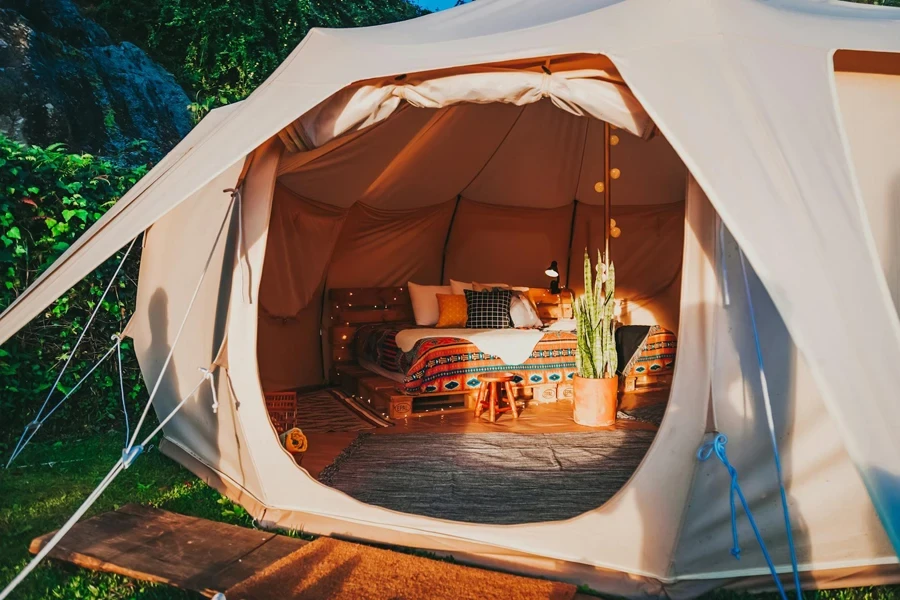
What if businesses already have loyal customers? They can encourage these campers to upgrade their tent poles by offering exciting contests. Customers who buy new poles can share photos or videos of their improved camping experiences.
This approach not only incentivizes upgrades but also generates valuable user content for marketing. More importantly, it fosters an amazing sense of community around the retailer’s brand.
4. Use an interactive tent pole selector tool
Retailers can also offer online tools to help customers choose the right tent poles. By answering a few questions about their tent type, camping style, and budget, users can get personalized recommendations for the best poles to meet their needs. This approach personalized the buying experience while boosting consumer confidence in their choices.
Bottom line
Tent poles are an essential part of any camping experience. They help give tents their popular structure and play a crucial role in ensuring campers’ safety in various weather conditions. If consumers don’t cut corners when purchasing tent poles, businesses shouldn’t either.
This article explored everything worth considering when choosing tent poles to sell. So, leverage them now.
Don’t forget to subscribe to Alibaba Reads’s sports section for more insightful articles like this.
